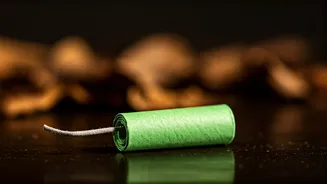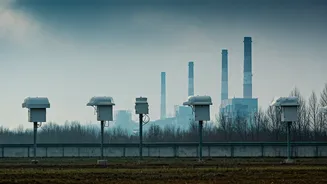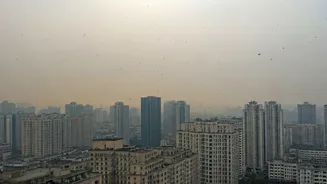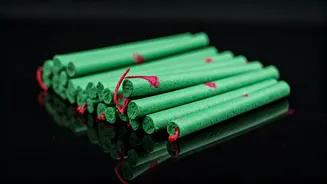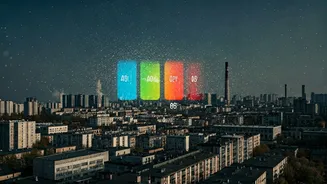Understanding the Buzz
The term 'green crackers' has gained traction, especially with heightened awareness of environmental concerns. These crackers are marketed as a cleaner
alternative to traditional firecrackers, promising reduced emissions and a lower impact on air quality. However, the term itself can be misleading, as these crackers are not entirely 'clean'. Their composition includes specific chemical formulations designed to minimize pollution compared to their conventional counterparts. This article aims to clarify the science behind these crackers, addressing the claims and dispelling any misconceptions, providing clarity on how they work and their effectiveness in real-world scenarios.
Composition and Chemistry
Green crackers differ in their chemical composition. Traditional firecrackers often use a combination of chemicals that, when ignited, release large amounts of pollutants, including harmful particulate matter, sulfur dioxide, and nitrogen oxides. Green crackers, on the other hand, are formulated to reduce these emissions. They typically use specific additives and chemical combinations. These are designed to alter the combustion process, leading to fewer pollutants being released into the air. Specific examples include the use of certain types of salts and binders to modify the burning process. These formulations aim to lower the amount of harmful emissions released during ignition and improve overall air quality in comparison to standard firecrackers.
Environmental Impact Analysis
The environmental impact of firecrackers has always been a significant concern, especially during festive seasons. Traditional firecrackers heavily contribute to air pollution by releasing high levels of pollutants. These pollutants can exacerbate respiratory problems, and contribute to overall poor air quality. Green crackers are developed with the goal of minimizing this impact. They achieve this by reducing the levels of harmful emissions such as particulate matter (PM2.5 and PM10), sulfur dioxide (SO2), and nitrogen oxides (NOx). However, it is essential to recognize that while they are designed to be 'greener,' they aren’t entirely harmless. The reduction in emissions is relative, and their overall impact depends on factors such as the volume of crackers used and weather conditions.
Comparing the Alternatives
Comparing green crackers and traditional firecrackers reveals the key differences in their effects. Traditional firecrackers, known for their bright colors and loud noises, often contain chemicals that produce large amounts of particulate matter. This contributes to smog and respiratory problems. Green crackers offer a contrasting approach. While they still provide the visual and auditory effects associated with fireworks, they are formulated to minimize the release of harmful pollutants. The specific formulations in green crackers, such as those designed by the Council of Scientific and Industrial Research (CSIR), are engineered to reduce emissions by 30-35%. This difference is important when considering the overall environmental and health implications, especially in areas with poor air quality.
Effectiveness of Reduction
The efficacy of green crackers in reducing pollution is an important aspect of their evaluation. Studies and tests have shown that these crackers can significantly lower the levels of specific pollutants, such as particulate matter. However, the extent of the reduction varies depending on several factors. The composition of the cracker, the method of ignition, and the environmental conditions all play a crucial role. For example, some green crackers have been shown to reduce particulate matter emissions by a certain percentage when compared to traditional crackers. However, the absolute levels of pollution can still be high if a large number of crackers are used. Therefore, while green crackers represent an advancement, they do not eliminate pollution entirely.
Dispelling Misconceptions
There are several common misconceptions surrounding green crackers. One major misconception is that they are entirely pollution-free or 'clean'. The reality is that they are designed to be a less polluting alternative. Another misconception is that all green crackers perform equally well. The actual impact can vary depending on the specific formulation. Additionally, there’s a misconception that green crackers are always quieter than traditional ones, though this isn't always true. Understanding these points is crucial for making informed choices. It is important to approach the use of green crackers with a balanced perspective, acknowledging their benefits while remaining aware of their limitations.
Conclusion: A Greener Approach
Green crackers represent a step towards minimizing the environmental impact of fireworks. By understanding their composition, environmental effects, and how they differ from traditional crackers, consumers can make informed decisions. While they are not a perfect solution, green crackers offer a way to celebrate while making efforts to reduce pollution. As technology improves, we can expect to see further innovations in this field, potentially leading to even more eco-friendly options. The key is to be aware of the science, assess the real impact, and choose celebrations that align with a commitment to environmental protection and responsible practices.






